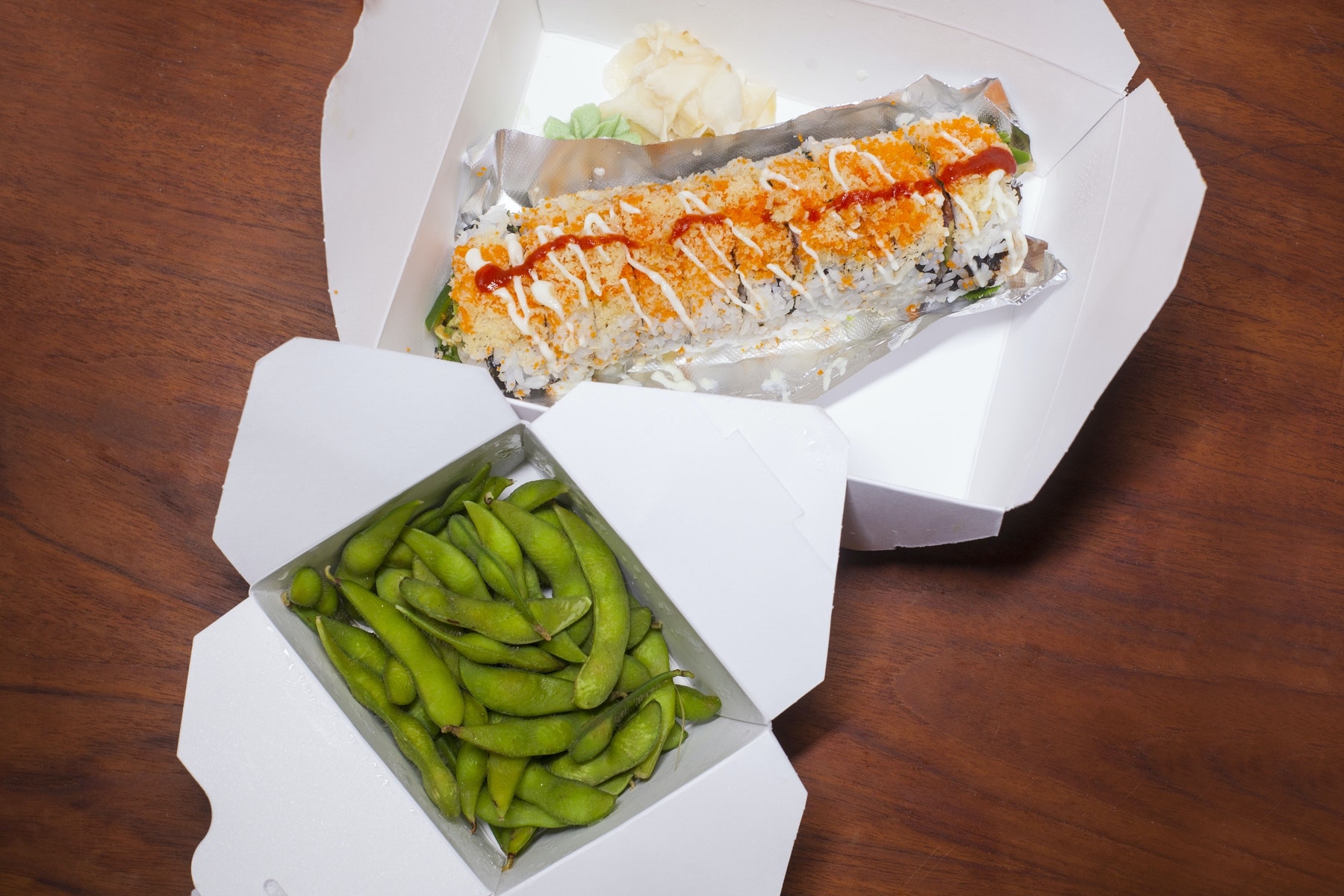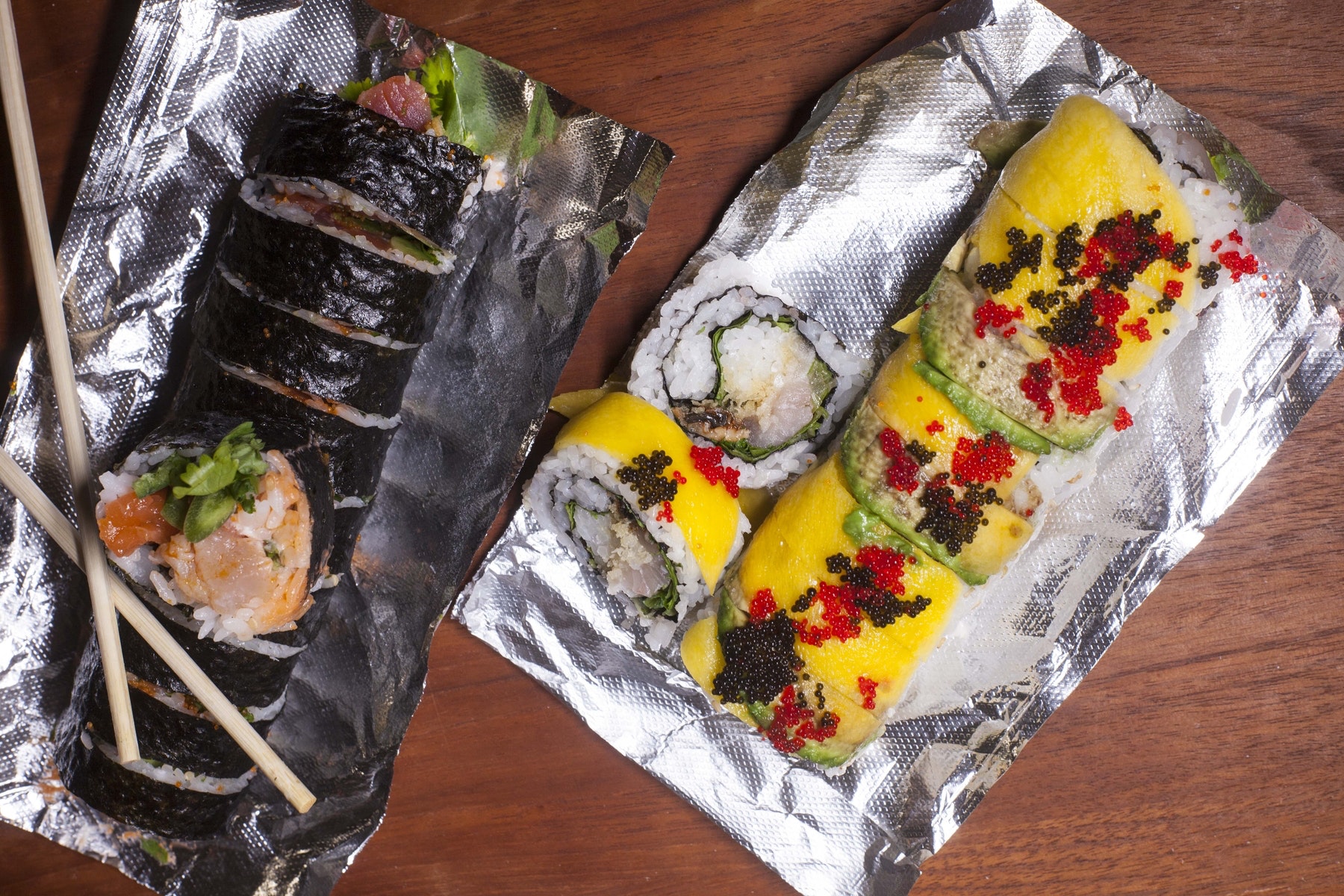Individually-Packaged Sushi Boxes Catering
Sushi originated as street food in Japan during the 8th century, but it wasn't until the 1960s with the opening of Kawafuku in Los Angeles's Little Tokyo that it gained popularity in the United States. The dish consists of seasoned rice and seaweed wrapped around ingredients such as raw fish, tempura, fruit, and vegetables. The rising popularity of sushi was a sign of changing tastes in America, as traditional "meat and potatoes" offerings were declining and making way for more sophisticated cuisines. The creation of the California roll, filled with imitation crab and avocado instead of raw fish, helped increase the popularity of sushi by making it more accessible to a wider audience. Nowadays, sushi is a convenient and affordable option for diners and can be customized to suit individual preferences, making individually-packaged sushi boxes a great option for your next event!
Individually-Packaged Sushi Boxes by City
Our Menus

Best Practices and Tips when Ordering Individually-Packaged Sushi Boxes
Here is some quick sushi terminology: maki is the traditional sushi roll most think of when ordering sushi. Sashimi is raw slice of fish with no rice at all. Nigiri is raw fish on top of a small clump of rice. You’ll rarely get brown rice sushi because it’s not sticky enough. Sushi rice is very sticky and has a vinegar flavor to it because it is made with rice vinegar. Though most fish can be served raw, shrimp is always cooked and that’s why it is typically pink/red. Raw shrimp is gray. A good reminder that not all sushi is raw fish!

Is Sushi Gluten-Free?
Most varieties of sushi are naturally gluten-free, but traditional soy sauce typically contains gluten. It's worth noting that California rolls, which contain imitation crab meat, are not gluten-free due to the presence of gluten in the crab meat.
Where can I find sushi burritos or poke?
Sushi burritos were first introduced by Peter Yen in San Francisco in the early 2000s. On CaterCow, we categorize sushi burritos under Hawaiian cuisine, along with poke bowls. This is due to the popularity of both dishes being offered together in Hawaiian restaurants.
Frequently Asked Questions
Are there vegan and vegetarian options for individually-packaged sushi boxes?
What sides go well with sushi?
How much will be enough for each member of my team?
What ingredients are in Individually-Packaged Sushi Boxes?
Sushi Rolls
- Cucumber Sesame
- Eel Avocado
- Eel Cucumber
- Gluten-Free Cucumber Sesame
- Gluten-Free Eel Avocado
- Gluten-Free Eel Cucumber
- Gluten-Free Salmon Avocado
- Gluten-Free Salmon Cucumber
- Gluten-Free Salmon Jalapeno
- Gluten-Free Salmon Tomato
- Gluten-Free Shrimp Avocado
- Gluten-Free Shrimp Cucumber
- Gluten-Free Spicy Red Crab
- Gluten-Free Spicy Salmon
- Gluten-Free Spicy Scallop
- Gluten-Free Spicy Tuna
- Gluten-Free Truffle Avocado
- Gluten-Free Tuna Avocado
- Gluten-Free Tuna Cucumber
- Gluten-Free Tuna Toro
- Gluten-Free Yellowtail Jalapeno
- Gluten-Free Yellowtail Scallion
- Salmon Avocado
- Salmon Cucumber
- Salmon Jalapeno
- Salmon Tomato
- Shrimp Avocado
- Shrimp Cucumber
- Spicy Red Crab
- Spicy Salmon
- Spicy Scallop
- Spicy Tuna
- Truffle Avocado
- Tuna Avocado
- Tuna Cucumber
- Tuna Toro
- Yellowtail Jalapeno
- Yellowtail Scallion
Specialty Rolls
- Black Widow Roll
- Buddha Roll
- Crab Rangoon Roll
- Double Down Roll
- Double Stack Roll
- Dragonfly Roll
- Five-O Roll
- Godzilla Roll
- Maui Waui Roll
- Megatron Roll
- Omega Roll
- Pantera Roll
- Pollo Loco Roll
- Red Crush Roll
- RPG Roll
- Scorpion Roll
- Spider Roll
- Stingray Roll
- Sushi Fruit Roll
- Vegan Buddha Roll
- White Tiger Roll
CaterCow is the easiest way to order reliable catering from vetted restaurants
Vetted, Curated Menus
We screen for quality food, punctual deliveries, and responsive communication from all of our restaurants, caterers, and bakeries.
Buffet, Individually-Packaged, and Group Orders
Order individually-packaged meals or buffet style. If individual style, you have the option to send a link to teammates for a group order.
Ordering is a Breeze
You can order self-service online with a few clicks of a button. Or if you order frequently enough, we can provide an account manager.
Earn Rewards
Leave reviews of your orders, and you'll earn points that can be redeemed for future credits and Amazon rewards.